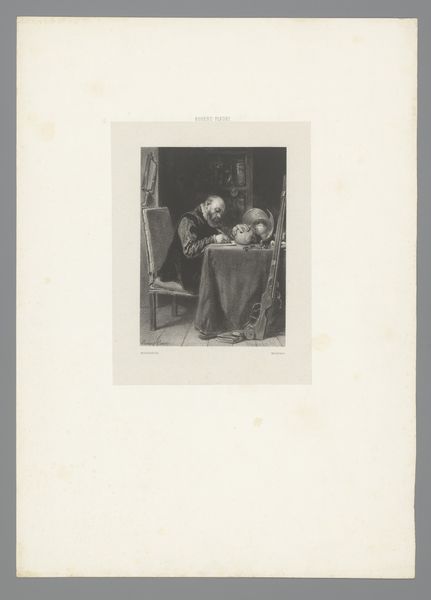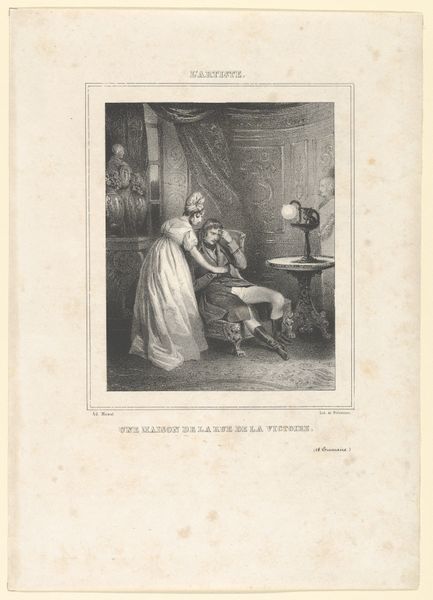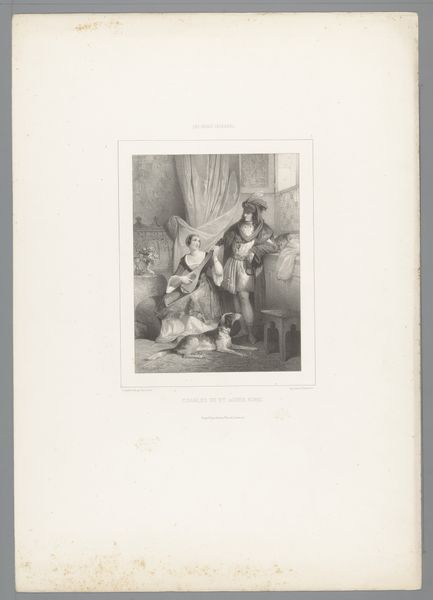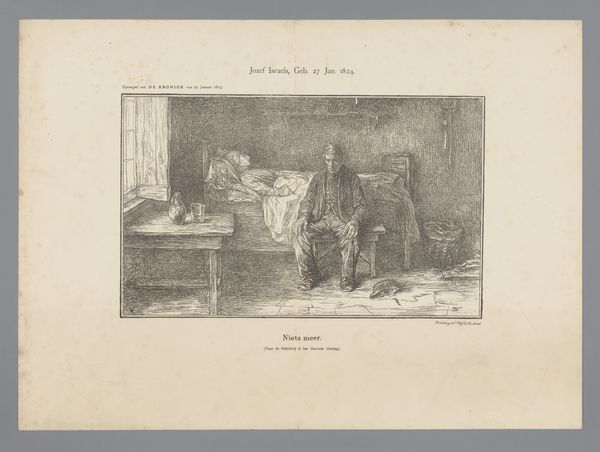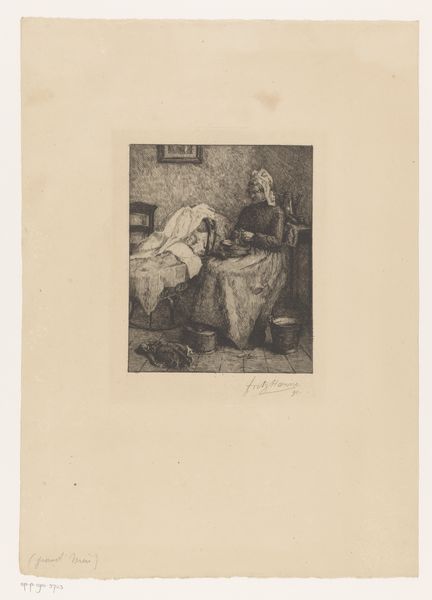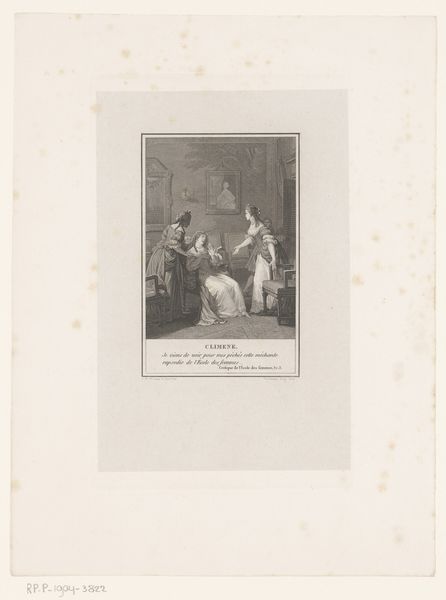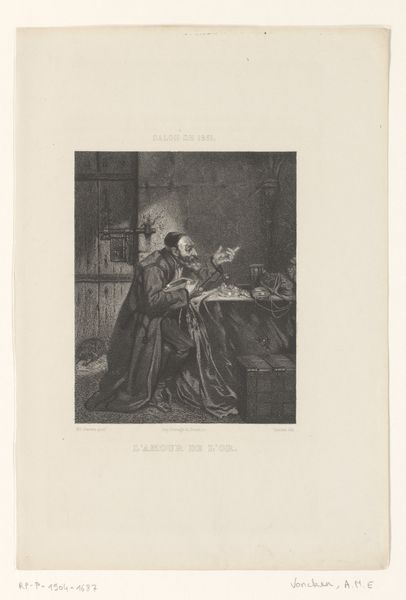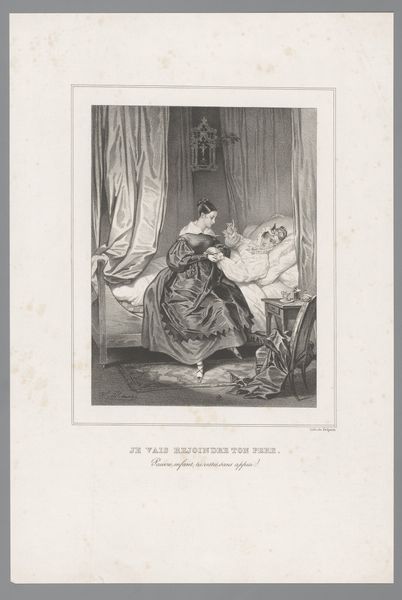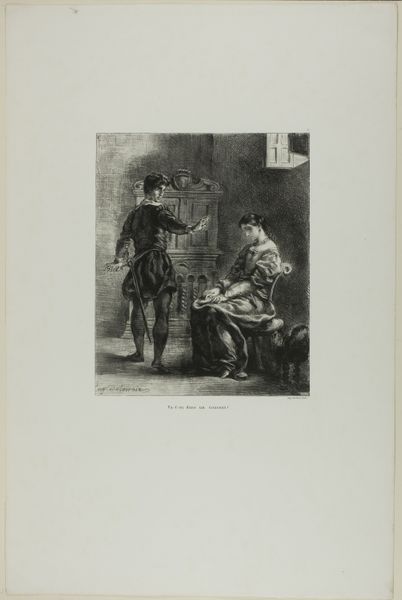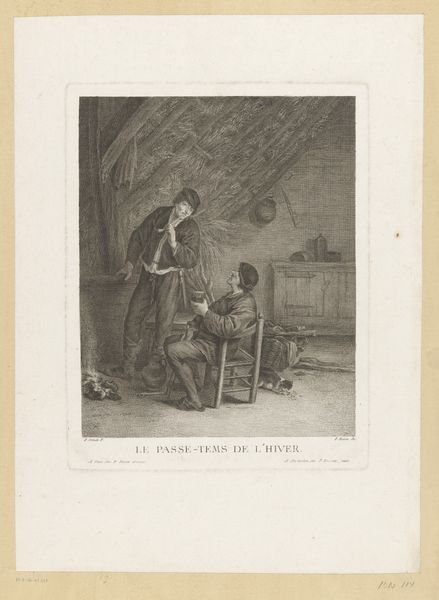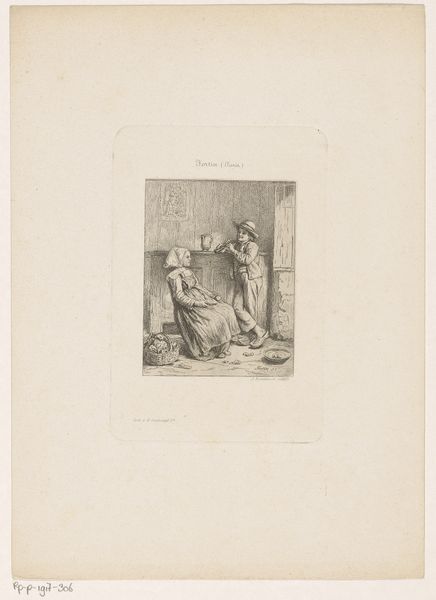
print, photography, gelatin-silver-print
#
portrait
# print
#
photography
#
gelatin-silver-print
#
genre-painting
#
realism
Dimensions: height 269 mm, width 219 mm
Copyright: Rijks Museum: Open Domain
Curator: This gelatin-silver print captures a quiet, domestic scene. This photographic reproduction after a painting by Albert Neuhuys, entitled "Larense vrouw bij de wieg," or "Laren Woman at the Cradle" in English, likely dates from somewhere between 1915 and 1950. Editor: It evokes a sort of solemnity, doesn’t it? The monochromatic palette definitely adds to that feeling. I'm immediately drawn to the textures—the rough basket weave against the smoothness of the infant's garments. Curator: Precisely. Neuhuys was part of the Laren School, a group of Dutch painters who, in the late 19th and early 20th centuries, were deeply influenced by the realism of the Barbizon school. Their paintings frequently depicted rural life and traditions, focusing on peasants and farmers. In their visual representations they valorized a sense of "authenticity," "honesty," and so forth, for popular consumption by urban elites. Editor: Right, and there's that almost photographic attention to detail that further emphasizes this idealization of rustic life. The woman is centered in the frame, caught in this private moment. It speaks volumes about the labor expected of women, the inherent connection between motherhood and toil. I also wonder who this photographic reproduction was intended for and whether the consumer connected to these tropes. Curator: Yes, genre-painting was extremely popular then! It catered to certain sensibilities by allowing access into the intimate settings of rural households—often rendered through rose-tinted glasses, no doubt. Photographic reproductions after paintings made these scenes accessible to a broader audience. The market for popular prints flourished during this era. Editor: Looking at it from today's viewpoint, it is complicated: It carries an emotional charge—maternal care, nurturing—but this image of the working class simultaneously flattens the complexities of lived experience under patriarchy. Curator: Indeed. Works such as this photograph and the painting it represents illustrate how art serves as both reflection and participant within socio-economic structures and discourses of the period. Editor: So true! This image serves as a touchstone, reminding us to think about the legacies, challenges, and triumphs surrounding women, labor, and family throughout art history and now.
Comments
No comments
Be the first to comment and join the conversation on the ultimate creative platform.
